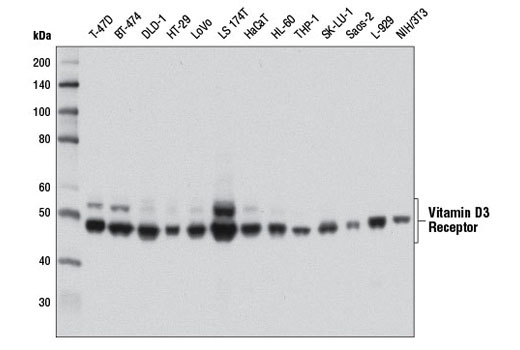
Western blot analysis of extracts from various cell lines using Vitamin D3 Receptor (D2K6W) Rabbit mAb.
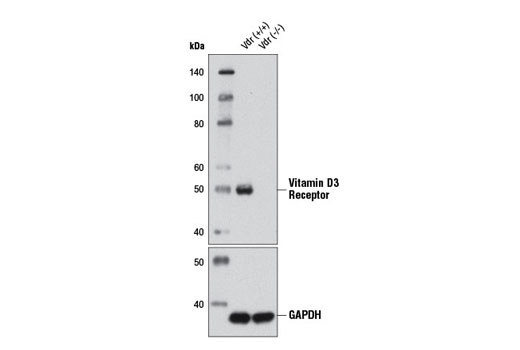
Western blot analysis of kidney tissue extracts from Vdr (+/+) and Vdr (-/-) mice using Vitamin D3 Receptor (D2K6W) Rabbit mAb (upper) and GAPDH (D16H11) XP ® Rabbit mAb #5174 (lower). (Vdr (+/+) and Vdr (-/-) kidneys were kindly provided by Dr. Marie Demay, Massachusetts General Hospital).

Western blot analysis of extracts from 293T cells, mock transfected (-) or transfected with constructs expressing Myc/DDK-tagged full-length human vitamin D receptor isoform A (hVDRA-Myc/DDK; +), full-length human pregnane X receptor (hPXR-Myc/DDK; +), and full-length human constitutive androstane receptor (hCAR-Myc/DDK; +), using Vitamin D3 Receptor (D2K6W) Rabbit mAb (upper) or DYKDDDDK Tag Antibody #2368 (lower).
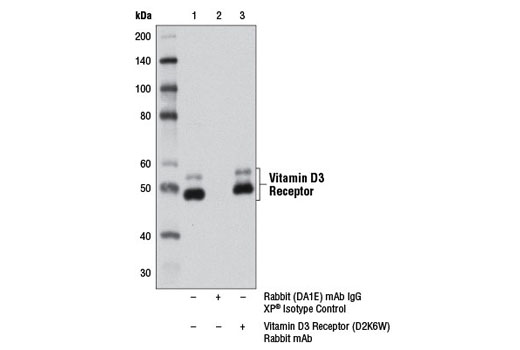
Immunoprecipitation of vitamin D3 receptor from T-47D cell extracts, using Rabbit (DA1E) mAb IgG XP ® Isotype Control #3900 (lane 2) or Vitamin D3 Receptor (D2K6W) Rabbit mAb (lane 3). Lane 1 is 10% input. Western blot analysis was performed using Vitamin D3 Receptor (D2K6W) Rabbit mAb.
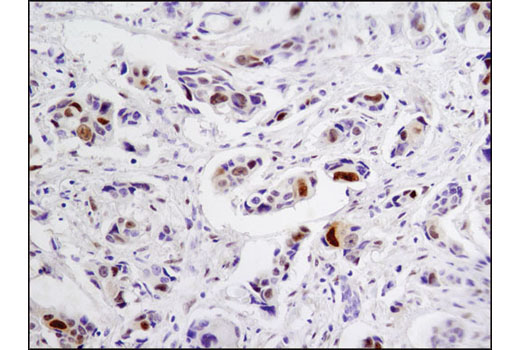
Immunohistochemical analysis of paraffin-embedded human breast carcinoma using Vitamin D3 Receptor (D2K6W) Rabbit mAb.
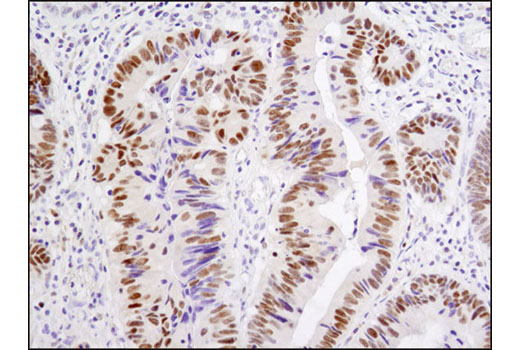
Immunohistochemical analysis of paraffin-embedded human colon carcinoma using Vitamin D3 Receptor (D2K6W) Rabbit mAb.
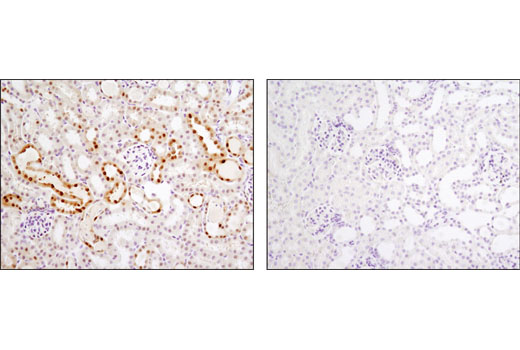
Immunohistochemical analysis of paraffin-embedded mouse kidney, Vdr (+/+; left) or Vdr (-/-; right), using Vitamin D3 Receptor (D2K6W) Rabbit mAb (Tissues courtesy of Dr. Marie Demay, Massachusetts General Hospital).
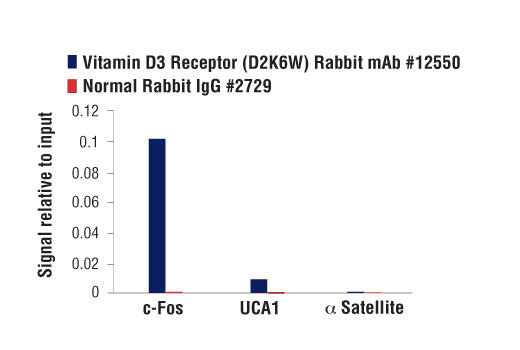
Chromatin immunoprecipitations were performed with cross-linked chromatin from 4 x 10 6 LS180 cells treated with calcitriol (10nM, 3 hours) and either 10 μl of Vitamin D3 Receptor (D2K6W) Rabbit mAb or 2 μl of Normal Rabbit IgG #2729 using SimpleChIP ® Enzymatic Chromatin IP Kit (Magnetic Beads) #9003. The enriched DNA was quantified by real-time PCR using SimpleChIP ® Human c-Fos Upstream Primers #25661, human UCA1 promoter primers, and SimpleChIP ® Human α Satellite Repeat Primers #4486. The amount of immunoprecipitated DNA in each sample is represented as signal relative to the total amount of input chromatin, which is equivalent to one.







